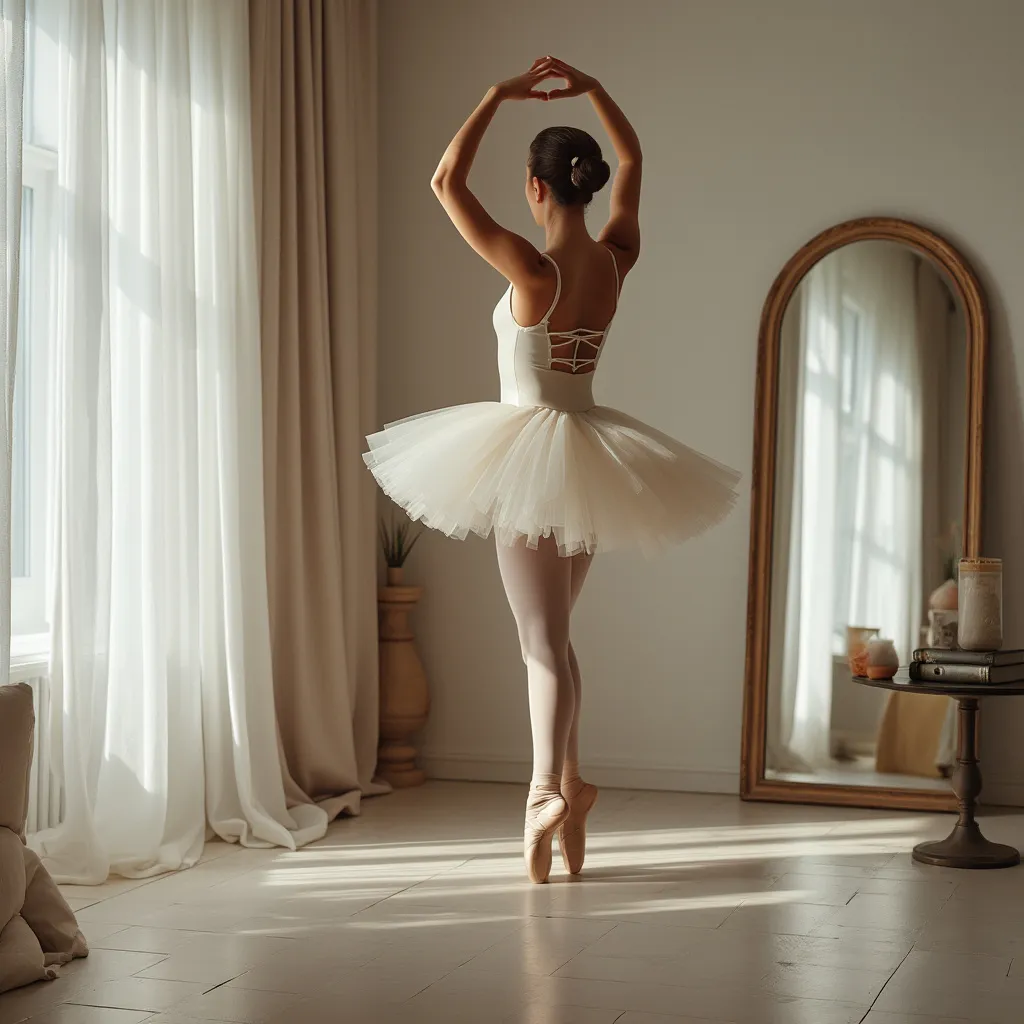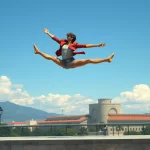Adagio: Mastering the Slow Movements

Introduction
Ballet is a dance form that requires precision, grace, and an understanding of various movements and techniques. One such movement that stands out for its elegance and complexity is the Adagio. The term “Adagio” is derived from the Italian word for “slowly,” and in ballet, it refers to a series of slow, controlled movements that showcase a dancer’s strength, balance, and fluidity.
The importance of Adagio in ballet cannot be overstated. It is a fundamental component of ballet training and performance, often used to highlight a dancer’s technical prowess and emotional expression. Mastering Adagio is essential for any serious ballet dancer, as it forms the foundation for many other movements and sequences.
In this article, we will delve into the historical background of Adagio, provide a technical breakdown of how to perform it, discuss key elements of technique, identify common mistakes and how to avoid them, explore its applications in choreography, and offer training exercises to help you master this beautiful movement. Additionally, we will address frequently asked questions to provide a comprehensive understanding of Adagio.
Historical Background
The origins of Adagio in ballet can be traced back to the early days of classical ballet in the 17th and 18th centuries. During this period, ballet was evolving from a courtly dance form into a theatrical art. Adagio movements were initially incorporated into ballet to showcase the dancer’s ability to perform slow, controlled movements with grace and poise.
Over time, Adagio evolved and became a staple in ballet performances and training. It was further developed and refined by notable choreographers such as Marius Petipa and George Balanchine, who used Adagio to create some of the most memorable and emotionally powerful moments in their ballets. Dancers like Anna Pavlova and Rudolf Nureyev also became renowned for their mastery of Adagio, bringing a new level of artistry and technical skill to the movement.
Technical Breakdown
Performing Adagio requires a deep understanding of ballet technique and a high level of physical control. Here is a step-by-step explanation of how to perform a basic Adagio sequence:
- Preparation: Begin in a standing position with your feet in first position (heels together, toes turned out). Engage your core muscles and maintain a tall, upright posture.
- Developpé: Slowly lift one leg into a developpé, extending it fully while maintaining balance on the supporting leg. The developpé can be performed to the front (devant), side (à la seconde), or back (derrière).
- Arabesque: From the developpé, transition into an arabesque by extending the lifted leg behind you while keeping your upper body lifted and your arms in a graceful position.
- Attitude: Bend the extended leg slightly at the knee to create an attitude position. This can be done to the front, side, or back.
- Penché: Slowly lower your upper body forward while lifting the extended leg higher, creating a penché position. Maintain control and balance throughout the movement.
- Return to Standing: Gradually return to the standing position, bringing the extended leg back to the starting position and maintaining your balance and posture.
Key positions and transitions in Adagio include the developpé, arabesque, attitude, and penché. Each of these positions requires precise control and fluid transitions to create a seamless and graceful movement.
Common variations of Adagio include different arm positions, changes in the direction of the developpé, and incorporating turns or other movements into the sequence. These variations add complexity and artistry to the Adagio, allowing dancers to showcase their individual style and technical skill.
Key Elements of Technique
Balance
Maintaining balance during Adagio is crucial. To achieve this, focus on engaging your core muscles and keeping your weight centered over your supporting leg. Practice balancing exercises, such as standing on one leg or using a balance board, to improve your stability.
Posture
Proper body alignment and positioning are essential for performing Adagio. Keep your spine elongated, shoulders down and back, and head lifted. Imagine a string pulling you up from the top of your head to maintain a tall and elegant posture.
Timing
Understanding the rhythm and timing required for Adagio is key to executing the movement with grace. Practice counting the beats of the music and coordinating your movements with the tempo. Slow, controlled movements are the hallmark of Adagio, so take your time and focus on fluidity.
Strength and Flexibility
Adagio requires significant strength and flexibility, particularly in the legs, core, and back. To develop the necessary muscles, incorporate exercises such as leg lifts, planks, and back extensions into your training routine. Stretching exercises, such as splits and backbends, will also help improve your flexibility.
Common Mistakes and How to Avoid Them
Here are some frequent errors dancers make when performing Adagio and tips to prevent them:
- Loss of Balance: To avoid losing balance, focus on engaging your core muscles and keeping your weight centered over your supporting leg. Practice balancing exercises regularly.
- Incorrect Posture: Maintain proper body alignment by keeping your spine elongated, shoulders down and back, and head lifted. Use a mirror to check your posture and make adjustments as needed.
- Rushed Movements: Adagio is characterized by slow, controlled movements. Avoid rushing by practicing with a metronome or counting the beats of the music. Focus on fluidity and control.
- Lack of Flexibility: Improve your flexibility through regular stretching exercises. Incorporate dynamic stretches, such as leg swings, and static stretches, such as splits, into your routine.
- Weak Muscles: Strengthen the muscles involved in Adagio by incorporating targeted exercises into your training routine. Focus on the legs, core, and back to build the necessary strength.
Applications in Choreography
Adagio is prominently featured in many famous ballets and routines. For example, the “Rose Adagio” from Tchaikovsky’s “The Sleeping Beauty” is one of the most iconic Adagio sequences in ballet. This challenging piece requires the dancer to perform a series of slow, controlled movements while maintaining balance and grace.
Adagio is also used in different ballet styles and pieces to create moments of emotional intensity and beauty. In contemporary ballet, choreographers often incorporate Adagio movements to add depth and complexity to their works. The slow, controlled nature of Adagio allows dancers to express a wide range of emotions and create powerful visual effects.
Training Exercises
To master Adagio, incorporate the following exercises and drills into your training routine:
- Leg Lifts: Perform leg lifts to the front, side, and back to strengthen the muscles used in developpé and arabesque. Hold each lift for several seconds to build endurance.
- Planks: Planks are excellent for building core strength, which is essential for maintaining balance and control during Adagio. Hold a plank position for 30 seconds to 1 minute, gradually increasing the duration as you build strength.
- Back Extensions: Strengthen your back muscles with back extensions. Lie face down on the floor, lift your upper body off the ground, and hold for several seconds before lowering back down.
- Splits: Improve your flexibility with split stretches. Practice both front splits and side splits, holding each stretch for at least 30 seconds.
- Balance Drills: Practice balancing on one leg, using a balance board or standing on a soft surface to challenge your stability. Hold the balance for as long as possible, focusing on engaging your core muscles.
FAQ
How long does it take to master Adagio?
The time it takes to master Adagio varies depending on the dancer’s experience, dedication, and natural ability. For beginners, it may take several months to develop the necessary strength, flexibility, and control. More experienced dancers may be able to master Adagio more quickly, but it still requires consistent practice and refinement.
What are the most important muscles to strengthen for Adagio?
The most important muscles to strengthen for Adagio are the core muscles, leg muscles (particularly the quadriceps, hamstrings, and calves), and back muscles. These muscles provide the stability, strength, and control needed to perform slow, controlled movements with grace.
Can beginners attempt Adagio?
Yes, beginners can attempt Adagio, but it is important to start with basic exercises and gradually build up to more complex movements. Focus on developing strength, flexibility, and balance through targeted exercises and drills. Working with a qualified ballet instructor can also help beginners learn proper technique and avoid common mistakes.
What are some common injuries associated with Adagio?
Common injuries associated with Adagio include muscle strains, particularly in the legs and back, as well as joint injuries in the knees and ankles. To prevent injuries, it is important to warm up properly before practicing Adagio, use correct technique, and listen to your body. If you experience pain or discomfort, take a break and seek advice from a medical professional if necessary.
How can I improve my technique for Adagio?
To improve your technique for Adagio, focus on the following:
- Practice Regularly: Consistent practice is key to mastering Adagio. Set aside time each day to work on your technique and build strength and flexibility.
- Work with a Qualified Instructor: A qualified ballet instructor can provide valuable feedback and guidance to help you improve your technique. Take regular classes and seek one-on-one instruction if possible.
- Use a Mirror: Practicing in front of a mirror allows you to check your posture and alignment and make necessary adjustments. This visual feedback is essential for refining your technique.
- Record Yourself: Recording your practice sessions can help you identify areas for improvement and track your progress over time. Review the recordings and make note of any corrections needed.
- Stay Patient and Persistent: Mastering Adagio takes time and dedication. Stay patient, keep practicing, and celebrate your progress along the way.
Conclusion
Adagio is a beautiful and challenging movement in ballet that requires strength, balance, and control. By understanding its historical background, mastering the technical breakdown, focusing on key elements of technique, avoiding common mistakes, and incorporating targeted training exercises, dancers can develop the skills needed to perform Adagio with grace and precision.
Remember that mastering Adagio takes time and dedication. Stay patient, practice regularly, and seek guidance from qualified instructors. With persistence and hard work, you can refine your technique and create stunning Adagio performances that showcase your artistry and technical prowess.




